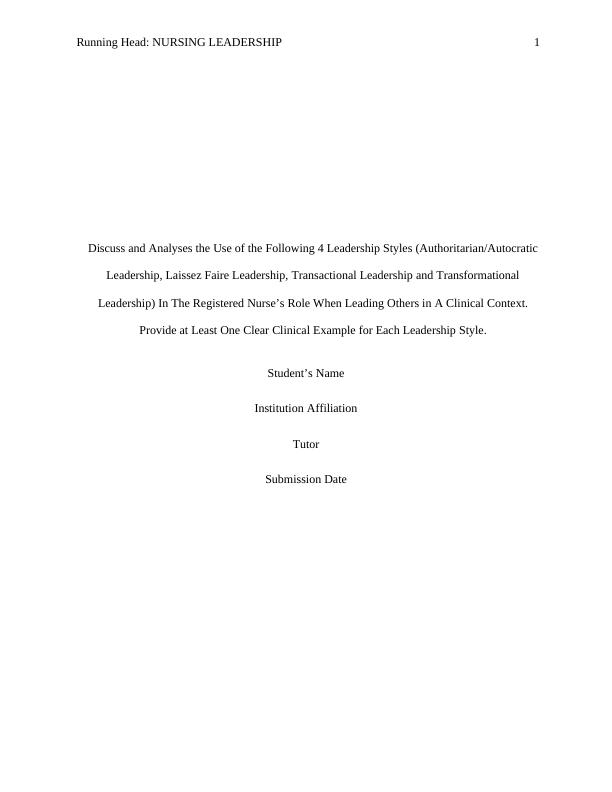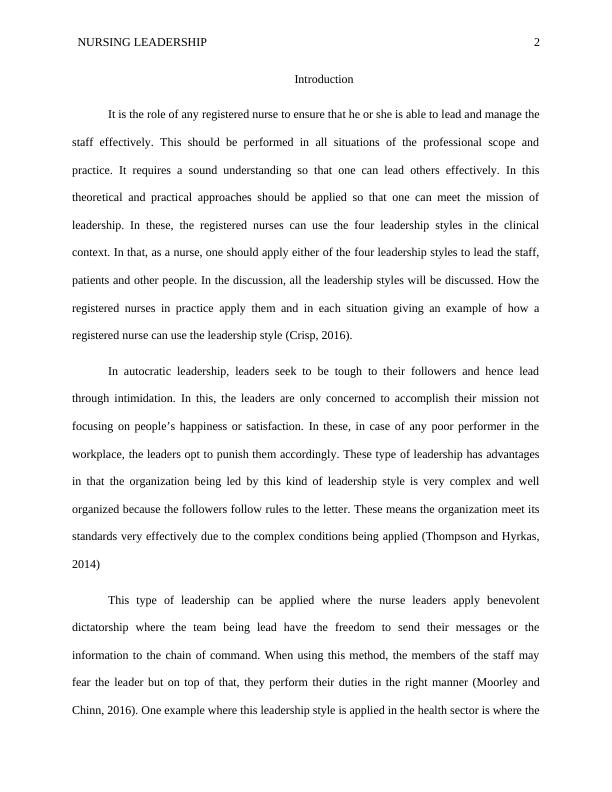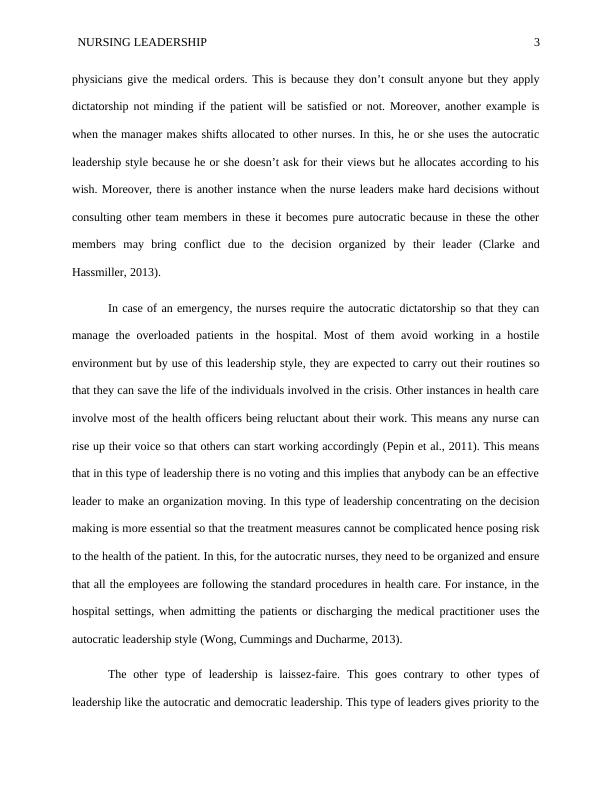Discuss and Analyze Leadership Styles in Nursing
Discuss and analyse the use of different leadership styles in the Registered Nurse's role when leading others in a clinical context.
10 Pages2982 Words42 Views
Added on 2023-03-20
About This Document
This article discusses and analyzes the use of different leadership styles in the role of registered nurses in a clinical context. It explores authoritarian/autocratic leadership, laissez faire leadership, transactional leadership, and transformational leadership, providing examples for each style. The article emphasizes the importance of effective leadership in nursing and its impact on patient care.
Discuss and Analyze Leadership Styles in Nursing
Discuss and analyse the use of different leadership styles in the Registered Nurse's role when leading others in a clinical context.
Added on 2023-03-20
ShareRelated Documents
End of preview
Want to access all the pages? Upload your documents or become a member.
Nursing Leadership
|10
|2894
|203
Leadership Style of a Registered and Practicing Nurse
|17
|3762
|324
Registered Nurse Responsibilities in Leading a Team for NSQHS Standards
|8
|2989
|53
Different Leadership Styles in Nursing
|8
|1477
|302
The Leadership Model Witnessed In a Clinical Setting
|7
|2971
|135
Nursing Leadership Styles
|11
|2761
|21



